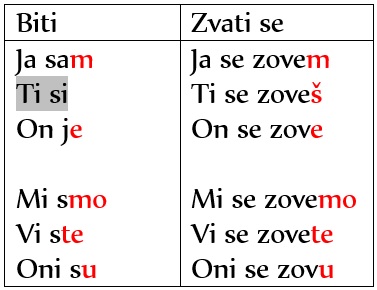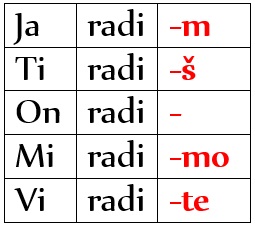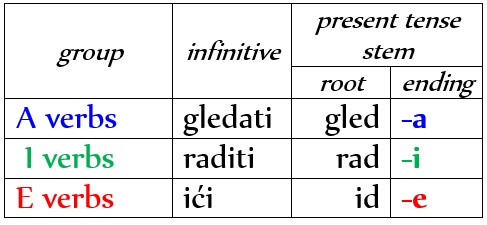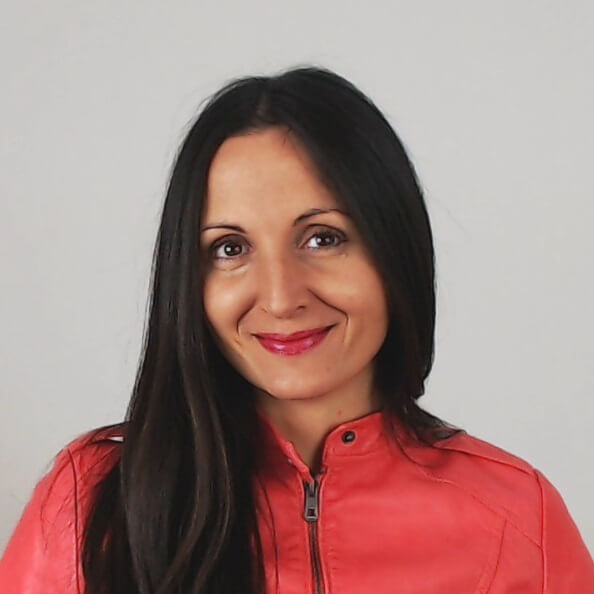Essentials of Serbian Verbs Conjugation
The Three-Faced Present Tense
My core lesson on Serbian Verbs. The Serbian present tense is both simple and complex. There are universal endings and only three types of verbs conjugation, but then it gets complicated…
Serbian present tense
Many Serbian language students are confused about the Serbian present tense. Beginner, intermediate and advanced, they often seem unsure about how to end a verb in third person singular or plural. And I can understand why and where the confusion comes from. So I decided to give you my core lesson on the Serbian verbs conjugation in the present tense. I will sum up all the information you need in a logical sequence that makes sense. After this lesson, and some practice or a cheat-sheet, you will feel safe and confident using the Serbian verbs in present tense.
I like to start with the first two verbs anyone learns when they start learning Serbian, and often any other language:
- biti (to be), to say for example „Ja sam dobro“ (I’m fine), or “Ja sam Magdalena” (I’m Magdalena)
- and zvati se (to be named), to say „Ja se zovem Magdalena“ (My name is Magdalena).
They are both irregular. But if you compare how they are conjugated, you will notice a consistency in the endings, in all persons except for the second person singular.

The 2nd person singular of the verb biti ends in –i, and this is a striking exception.
It’s totally bizzare, because all the other Serbian verbs end in –Š for the second person singular of the present tense, just like you can see the in conjugation of the verb zvati se.
This is why we don’t use pronouns with verbs in Serbian
It’s the language economy. The endings that you’ve just seen are signals that show what is the Subject, or who we are talking about, who is doing the action. These endings are the reason why we omit pronouns.
The ending clearly indicates the subject, so there’s no need to repeat this information. That’s the language economy.
- If a verb ends in –m, we always know that it’s about „ja“, the first person singular.
- When we see or hear –š in the end of a verb, we know it’s about „ti“, you singular.
- If there’s no consonant in the end, it’s about „on“ or „ona“, third person singular.
- If a verb ends in –mo, we know it’s about „mi“, the first person plural.
- When it ends in –te, we know it’s about „vi“, you plural.

These are universal endings for ALL Serbian verbs in the present tense.
There are only 3 exceptions, of which you’ve already learned one:
ti si (you are; second person singular of verb biti, to be)
The other two are also essential and important to learn:
ja hoću (I will, from the verb hteti, to will or want), and
ja mogu (I can, from the verb moći, to can or be able)
Here, the first person singular oddly ends in –u. But if I tell you that it’s the normal way to conjugate in Russian (Я буду, Я иду) and even some Montenegrin dialects („viđu“ instead of „vidim“, I see), it will look less strange.
The Three Types of Serbian Verbs Conjugation
 For the third person singular, the signal is actually the lack of an ending. (That’s why there’s only a dash and no ending in the table above.) It simply ends in a vowel -a, -i or -e, and no consonant.
The third person singular is actually the present tense stem.
And based on how this stem ends, we can classify all the verbs in three groups:

Why is this so important?
Because in many verbs of the Serbian language the infinitive stem and the present tense stem differ significantly! But I’ll tell you more about that in just a minute.
Now let’s see what happens with the third person plural (they: oni, one, ona).
Here we can have three different endings, based on the third person singular (or the present tense stem):
- whenever the third person singular ends in –A, the third person plural will end in –AJU (on gleda, oni gledaju);
- if the stem ends in –I the third person changes to –E (on uči, oni uče);
- and when the stem ends in –E the third person changes that to –U (on pije, oni piju – just like in the verb to be: on je, oni su).
That’s what I call „the Law of the Third Person Endings“ when teaching Serbian verb conjugation:

This is the table that covers ALMOST ALL verbs in the Serbian language.
Now, why is this important?
Because many verbs have one stem in infinitive and a bit different one in the present tense!
This means that the infinitive doesn’t always tell us how to conjugate a verb in present.
For example, the infinitive of the verb zvati (to call) ends in –ati,
but the verb belongs to the E group,
and it gets an extra -o-,
so it goes: (ja) ZOVEM!
If an infinitive ends in –ati, that doesn’t necessarily imply that the verb belongs to the A group!
That’s why my rule of thumb for choosing your dictionary is to make sure that it includes both the infinitive and the present tense forms.
And that’s why I always teach the verbs in two forms, infinitive and present tense: zvati, zove
(zvati for infinitive, zove for the present tense stem)
What is the method to learn the three Serbian verb groups and how to keep them separated?
Simply by learning and practicing the verbs group by group, and building your vocabulary group by group, just like in the Serbian Verb Magic Course
#1 Serbian Verbs Group: The E Verbs
In this video I’m explaining the first group of verbs that I teach after the verb to be: the E verbs:
Now, after all this, you must feel that you’ve learned a great deal about the Serbian verbs.
But you haven’t!
To really nail it, go back to the beginning of this text and read it with a pen and a notebook.
Write all the important information and draw the tables by your own hand.
Use Quizzes AND Workbooks in the Serbian Verb Magic course!
Then make a list of verbs and practice making sentences with them. Actually, you’ll need three lists: for A, I and E verbs conjugation.
Make at least three example sentences with all the verbs you’ve got:
1) for the first person singular (ja), because we always talk about ourselves,
2) for the third person singular (on, ona, ono), to get used to the different vowels in the end,
3) and for the third person plural, because the endings are different.
This is a useful exercise even for advanced students, because they are also often confused about the third person plural ending:
–AJU, –U, or –E.
Only having the information is not enough. Learning a language takes practice.
by Magdalena Petrovic Jelic
Founder of Serbonika
Serbian language teacher and entrepreneur, language lover and polyglot, but also a mother and a relentless storyteller. Read more about me.
My mission is to create the best method for learning Serbian. Would you like to learn Serbian with my lessons? Try free.
Serbonika
Najbolja metoda za učenje srpskog jezika
The best method to learn Serbian
The sooner you start learning, the sooner you’ll start talking. Take action now!
All Shapes of the Future Tense in Serbian and Croatian Language
So many forms to express the future tense in Serbo-Croatian! What are all of them and how to make sense? Read on to learn all shapes of the future tense in Serbian and Croatian.
All differences between will and want in Serbian: hteti i želeti
If you’re puzzled about the verbs will and want in Serbian (hteti i želeti), unsure when to use which, that’s common. Let’s learn all their differences and similarities to clear up the confusion.
Feet Speech: 8 Serbian Leg Idioms for English and Norweigian Speakers
Did you know that many Serbian leg idioms are actually the same in English and Norwegian? That was a surprise for me too!



